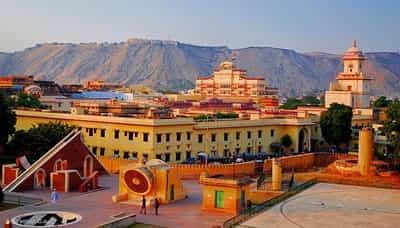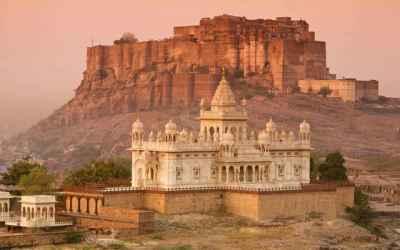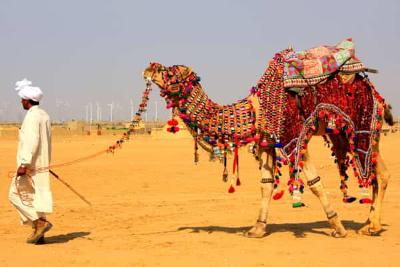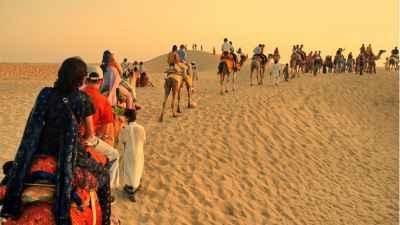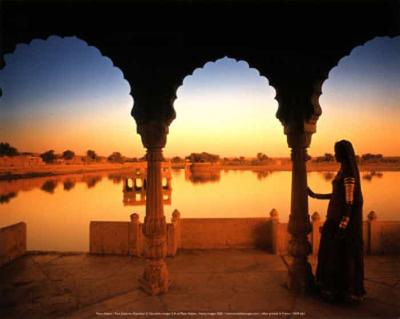Understanding the Role of Camels in Rajasthani Society
Understanding the Role of Camels in Rajasthani Society
When you think of Rajasthan, the first image that comes to mind is often that of vast deserts, majestic palaces, and colorful festivities. But there is one animal that has played a crucial role in shaping the cultural and economic fabric of this region - the camel. Camels have been an integral part of Rajasthani society for centuries, and in this blog post, we will explore their importance and the various roles they play in the lives of the people.
Historical Significance
Camels have been an important mode of transportation in the arid and harsh desert environment of Rajasthan since ancient times. The camel caravans, also known as 'kafilas,' were the lifeline of the region, facilitating trade routes and connecting various cities. These caravans were responsible for carrying goods such as spices, silk, and precious stones from Rajasthan to other parts of India and even to distant lands like Persia and Arabia.
The historical significance of camels is also evident in the architecture of Rajasthan. Many palaces and forts were strategically built along the camel routes to assert control over the trade and ensure the safety of the caravans. The Bikaner and Jaisalmer regions, in particular, were known for their camel-based trade activities.
Camels in Agriculture
Camels play a crucial role in the agricultural practices of Rajasthan. Due to their ability to survive in harsh desert conditions, they are used for plowing fields and transporting agricultural produce. They are especially valuable during the dry season when access to water and other resources is limited.
To ensure the well-being of the camels, many farmers have developed a symbiotic relationship with these animals. They provide them with food, water, and shelter, while the camels provide labor and help cultivate the land. The desert regions of Rajasthan are known for their unique camel-driven wells, known as 'khadins,' which help in irrigation.
Cultural Significance and Tourism
The camel holds immense cultural significance in the folk traditions and art forms of Rajasthan. From beautifully embroidered camel decorations to vibrant camel-themed festivals, these majestic creatures are celebrated and honored by the locals.
Camel safaris are one of the major attractions for tourists visiting Rajasthan. These safaris allow visitors to experience the desert landscape and traditional Rajasthani hospitality. Riding on a camel's back, exploring the sand dunes, and witnessing mesmerizing sunsets has become a popular activity for tourists.
Challenges and Conservation Efforts
Despite their significance, camels are facing numerous challenges in modern times. The rapid urbanization and mechanization of agriculture have reduced their demand as a means of transportation and labor. As a result, many camel breeders and herders are facing economic hardships.
However, there have been efforts to conserve and protect the camel population in Rajasthan. Various governmental and non-governmental organizations are working towards creating awareness and providing support to the camel breeders. Camel fairs and festivals are organized to promote the cultural and economic significance of camels.
Conclusion
The role of camels in Rajasthan goes beyond their significance as a means of transportation. They are an inseparable part of the cultural heritage of the region and continue to play a vital role in the lives of the people. From historical trade routes to agricultural practices and tourism, camels have left an indelible mark on Rajasthan.
So, the next time you visit Rajasthan, make sure to appreciate the importance of these magnificent creatures and take a camel safari to immerse yourself in the rich cultural heritage of the region.
Remember to share this blog post with your friends and fellow travel enthusiasts to spread the word about the role and significance of camels in Rajasthani society!
Disclaimer : The information provided in this blog is for general informational purposes only. While we strive to keep the content accurate and updated, TravelSetu assumes no liability for errors or omissions. If you believe any part of this blog infringes your rights or causes concern, please notify us immediately at info[at]travelsetu[dot]com so that appropriate action can be taken.
